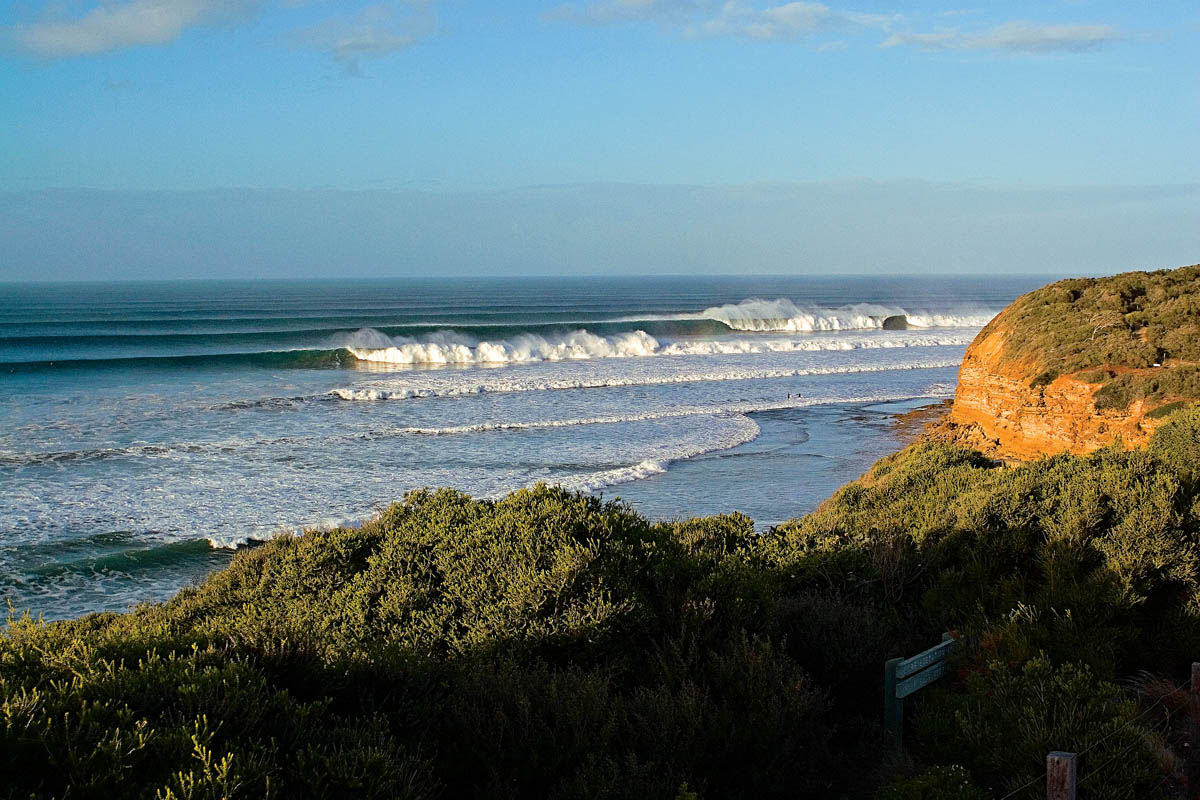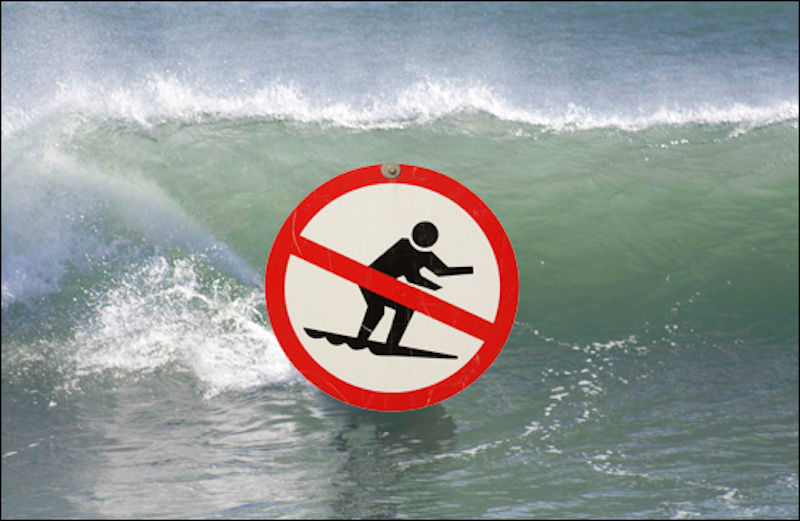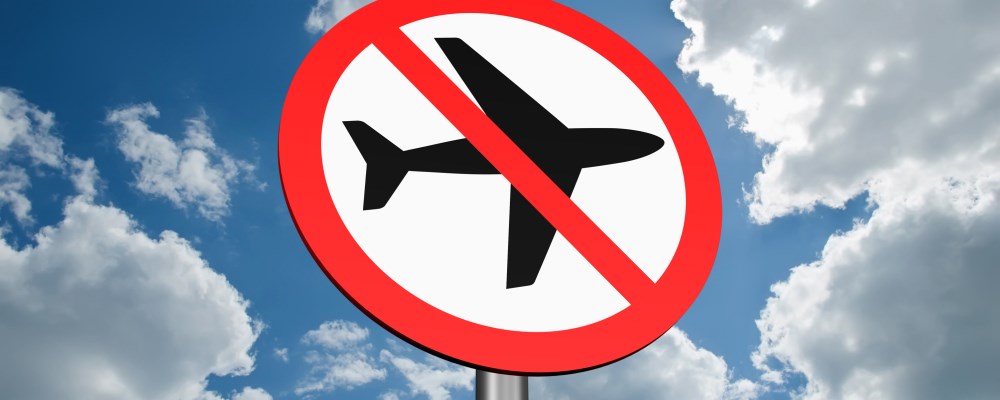
17 Mar Covid-19: Can you catch the coronavirus while surfing?
Can you catch the coronavirus while surfing?
In this article we will cover the following during the pandemia of Covid-19:
- River Surfing
- Ocean Surfing
- Sewer treatment practice
- Surfing bans around the world
- Travel Restrictions due to corona virus
- Costa Rica border policies during covid-19
With all the recent news this week regarding government regulations and panic around the Coronavirus, many surf competitions such as the Corona open at Snapper Rocks on the Gold Coast and the famous RipCurl Pro at Bells Beach has been canceled in Australia.
But since yesterday, many unfortunate surfers are being forced to stay home and risk getting hefty fines (and event a record) for going to the beach to surf.
If you are lucky enough to be living in a place where surfing is not forbidden (yet), should you still go?
It obviously depends how crowded your spot is and how close to someone else you are in the water, but as we all know as surfers, we spit out water from our mouth and swallow some salt water every once in a while. How contagious can the ocean be? Does the salt in the ocean prevents the contagion?
So here are some information that we gathered for you…
Can you catch the coronavirus river surfing around the city?
The virus has been shown to remain viable and infectious, at least temporarily, in natural freshwater environments including lakes and streams. While dilution is suspected to keep the risk low, high concentrations of the viable COVID-19 virus could put freshwater recreation users at risk.
Can you catch the coronavirus surfing in the ocean?
There has been no information shared on the ability of the COVID-19 virus to remain viable in saltwater up to now, so it’s unclear if swimming at saltwater beaches elevates the risk of contracting COVID-19. However, communal spread is a serious issue so spending time at popular beaches, if in close contact to other beachgoers, will increase your risk.
How could the virus even get into the water where we surf?
Like many harmful viruses and pathogens, the main exposure risk to the water recreation community is from sewage pollution. The release of raw or undertreated sewage into our surface waterways can cause diseases to spread through the “fecal-oral transmission route.” In other words, when we recreate at the beach during a sewage spill or release of undertreated wastewater, we risk ingesting fecal-borne pathogens that can cause symptoms like stomach upset; ear, eyes, nose and throat infections; as well as more severe infections like E. Coli, MRSA, giardia, hepatitis, and worse.
At this point, the research community does not know if people can contract the COVID-19 virus from exposure to feces in recreational waters but the overall consensus is that it might be possible. The RNA of the virus was found in stool samples of infected patients, but we do not know if the virus remains infectious after passing through the human digestive system. In order to be infectious, the virus needs both intact RNA and an intact outer envelope- which has not yet been observed by scientists in viruses obtained from stool samples. For this reason, and the fact that other coronaviruses are susceptible to UV radiation and unable to persist over long periods of time in waterways, researchers stated that “the risk of capturing COVID-19 from feces seems low,” but additional research is needed to confirm.
Due to the current uncertainty, areas affected by sewage spills, leaks or overflows, or have high numbers of septic tanks, cesspools or homeless populations, could have increased risk for potential transmission of the virus in affected waterways. Local health authorities post warnings to protect public health from exposure to many different harmful pathogens in sewage that can make you sick. Surfrider’s Clean Water initiative strives to protect clean water and to eliminate these sources of pollution that can put public health at risk.
-> Make sure to check your local beach water quality before heading to the beach, as high bacteria is an indication of raw or undertreated sewage in the water.
Do sewage treatment practices remove or disinfect the virus?
Typical treatments that include sterilization with chlorine and other disinfectants are highly effective at eradicating the virus. However, if you are in a place that uses only primary treatment at your sewage treatment plant, it is possible that the viable virus could be discharged with effluent into waterways through offshore outfalls or groundwater injection wells. Please note that there are also concerns about biosolids, which are waste solids from treatment plants used as fertilizer, being able to accumulate viruses and other pathogens. Additional research is needed to confirm if current treatment methods for biosolids are able to destroy the virus.
Can you catch the coronavirus while surfing? So far, we think not, unless you are in a very crowded surf spot.
What are best practices to stay safe?
The CDC keeps an updated list of best practices to stay safe. Researchers stressed the fact that community mitigation is key and everyone has a role to play to protect themselves and others. Some key steps include:
- Wash your hands for at least 20 seconds frequently and thoroughly
- If soap and water are not available, use at least 60% alcohol-based hand sanitizer
- Do not touch your face (especially eyes, nose or mouth) with unwashed hands
- Clean frequently touched surfaces often with home cleaning products and then follow with disinfectants that contain either adequate concentrations of bleach or are minimum 70% alcohol-based. Note that you can easily make your own disinfectant for surface cleaning by mixing 4 tsp bleach per 1 quart of water.
- Stay home if you are sick
- Practice social distancing and avoid large gatherings (greater than 10 people, but this recommendation is changing rapidly as state and cities close down restaurants, bars and concert halls to mitigate community exposure)

Surfing bans around the world
Several busy beaches have been closed around the world: In Lima, Peru, authorities in Puerto Rico are implementing similar measures. According to Puerto Rican surfer Brian Toth, the beaches in PR are closed, with a $5,000 fine and up to 6-months in jail for anyone that violates the rule.
Italy, one of the countries hit hardest by the COVID-19 pandemic, went on full lockdown last week, closing all schools, shops and sporting events, officials ordering people to stay home, except for essential travel. And, as it turns out, that order extends to the beach, with fines for those who disobey the rules. According to Italian surfer Nik Zanella, “the ban on outdoor activities will be in place till April 03. While it doesn’t mention surfing explicitly, every time you go out of your house you need to fill a self-declaration that states where you go and why.” Zanella continues: “Police stop you, analyze what you wrote and decide if your outing is legit. If not you get a fine of 209 euro and the infraction goes into your legal record. That may backfire on you if you apply for a public job, like being a teacher for example, where your record must be clean. It’s not fun and you may even end up in jail.”
Other European counties are following suit with beach closures. Yesterday Wavelength reported that “Portugal’s national maritime authority announced on its website that all beach-based sports and leisure activities involving crowds are now forbidden across the country, as well as on the islands of Madeira and the Azores.” And, according to the Associação Nacional de Surfistas (NSA), that ban extends into the ocean as well. The NSA had this to say on their Facebook Page: “Attention to all surfers: according to the orders of the captaincies of the port of Lisbon, Cascais and Peniche, surf is forbidden for groups of 5 people or more from the beaches north of Albufeira lake to Obidos lagoon. In addition to the already known total ban in Porto and Gaia.”
“Tough times over here, everyone locked themselves at home, and no one is really leaving their houses,” says Portuguese big-wave surfer Nic Von Rupp. “Beaches are closed, and they say for activities as well. I haven’t seen the ocean so I don’t know if it’s true or not. But I’m respecting the procedure.”
The same procedures are being applied to Spain as well. As reported by the UK Mirror this morning, “Spain is starting to close many of its beaches and banning tourists from swimming in another bid to stop the spread of coronavirus.” Magicseaweed spoke with Spanish charger Natxo Gonzalez, who explained that surfing, at the moment, seems to be off limits. “The police are on the streets trying to stop surfers going out, we are at home just going out to the supermarket and nothing else.”
“Everything is really sensitive right now,” says Spain’s Kepa Acero, currently in self-quarantine. “We can’t do anything: The only thing we can do is go for food, and for work, in some situations. It looks like a nuclear holocaust; there’s nobody in the streets and it’s pretty unreal. The day before yesterday was the last time people were surfing, and now there are fines from 600 euros to 30,000 euros if you do activity in the streets.”

Coronavirus Travel Restrictions around the world
Countries across the world have imposed travel restrictions to slow down the spread of the coronavirus.
Canada
On March 16, Prime Minister Justin Trudeau announced that Canada was blocking the entry of anyone who is not a Canadian citizen or permanent resident, except for airplane crews, diplomats, immediate family members of Canadian citizens and “at this time,” United States citizens. Mr. Trudeau made the announcement during a news conference.
Beginning March 18, only four Canadian airports will continue to accept international flights, Mr. Trudeau said. The airports include Toronto Pearson International Airport, Montréal-Pierre Elliott Trudeau International Airport, Vancouver International Airport and Calgary International Airport; domestic flights and those arriving from the United States, Mexico, the Caribbean and Saint Pierre and Miquelon will be exempted.
United States
On March 11 the United States barred the entry of all foreign nationals who had visited China, Iran and a group of European countries during the previous 14 days.
The ban applies to countries in the Schengen Area, which are Austria, Belgium, Czech Republic, Denmark, Estonia, Finland, France, Germany, Greece, Hungary, Iceland, Italy, Latvia, Liechtenstein, Lithuania, Luxembourg, Malta, Netherlands, Norway, Poland, Portugal, Slovakia, Slovenia, Spain, Sweden and Switzerland.
Effective since March 16, the ban now also apply to foreign nationals departing from the United Kingdom and Ireland.
All American citizens and legal permanent residents who have been in high-risk areas and return to the United States are required to fly to one of the following 13 airports:
Boston-Logan International Airport (BOS), Massachusetts
Chicago O’Hare International Airport (ORD), Illinois
Dallas/Fort Worth International Airport (DFW), Texas
Detroit Metropolitan Airport (DTW), Michigan
Daniel K. Inouye International Airport (HNL), Hawaii
Hartsfield-Jackson Atlanta International Airport (ATL), Georgia
John F. Kennedy International Airport (JFK), New York
Los Angeles International Airport, (LAX), California
Miami International Airport (MIA), Florida
Newark Liberty International Airport (EWR), New Jersey
San Francisco International Airport (SFO), California
Seattle-Tacoma International Airport (SEA), Washington
Washington-Dulles International Airport (IAD), Virginia
Europe
On March 17, European Union leaders announced they were closing off at least 26 countries — with more than 400 million people — to nearly all visitors from the rest of the world for at least 30 days. European Union citizens, permanent residents, medical professionals and scientists are exempt, though some countries were asking those returning home to self-isolate for two weeks.
The restrictions are likely to be extended to four countries of the Schengen Area, which allows European nationals to travel in the region without a passport.
The 26 countries part of the European Union include: Austria, Belgium, Bulgaria, Croatia, Cyprus, the Czech Republic, Denmark, Estonia, Finland, France, Germany, Greece, Hungary, Italy, Latvia, Lithuania, Luxembourg, Malta, Netherlands, Poland, Portugal, Romania, Slovakia, Slovenia, Spain, Sweden.
Austria
Citizens from countries outside the European Union who have been in coronavirus hot spots, which the Austrian Foreign Ministry currently lists as France, Iran, Italy, South Korea, Spain, Switzerland and parts of China in the past 14 days will have to present a medical certificate confirming a negative test result for the new coronavirus upon entry to the country. The Austrian government also announced that all passengers, regardless of citizenship, will also have to provide a certificate confirming a negative test result if they’re entering Austria from Italy, Switzerland and Liechtenstein (from March 16).
The certificate, which must be dated within four days of arrival, needs to be signed by a licensed medical practitioner and be in English, German, Italian or French.
Belgium
For the time being, there are no travel restrictions imposed by the government of Belgium, according to the United States Embassy in Belgium. At this time, the Belgian Ministry of Foreign Affairs recommends against all trips abroad.
Travelers arriving in Belgium from abroad are not currently being asked to quarantine.
France
The French government has not issued any travel restrictions as of March 16, according to the U.S. Embassy and Consulates in France, but travelers returning to the country on government evacuation flights will be quarantined. Medical professionals at the Charles de Gaulle airport in Paris will meet flights from China, Hong Kong, Macao, Singapore, South Korea, Iran and certain regions in Italy to check passengers for symptoms and answer questions.
Germany
On March 16, Germany closed its borders with Austria, Denmark, France, Luxembourg and Switzerland.
(Click the link below for the exhaustive list countries and territories limiting entry. source: https://www.nytimes.com/article/coronavirus-travel-restrictions.html)
World Surf League cancels all surf events until May 31st
This week, the WSL announced that it would cancel all its surfing events until May 31st. This was a huge move and the CEO Erik Logan published a video announcement about it. We’re living in historical times.
List of currently canceled or postponed WSL events:
- Papara Pro Open Tahiti, French Polynesia – canceled
- Piha Pro Junior, New Zealand – postponed
- Corona Piha Pro, New Zealand – postponed
- Seat Pro Netanya, Israel – postponed
- Barbados Surf Pro, Barbados – postponed
- Corona Open Gold Coast, Australia – canceled
- WSL Awards – postponed
- Red Bull Airborne Gold Coast, Australia – canceled
- Jack’s Surfboards Pro, USA – postponed
- Longboard Pro Espinho, Portugal – postponed
- Caparica Surf Fest Pro, Portugal – postponed
- Central Japan Open, Japan – postponed
- Krui Pro, Indonesia – postponed
source: https://www.worldsurfleague.com/posts/450379/wsl-cancels-or-postpones-events-through-may
Costa Rica closes its border to international tourists until April 12
After saying week that it would not deny anybody from entering the country, Costa Rica officials did a 180 degree and announced on March 16 that it would close its borders to international tourists until April 12.
As part of Costa Rica’s declaration of a State of Emergency due to the coronavirus pandemic, it will not allow foreigners or non-residents to enter the country from 11:59 p.m. Wednesday through the same time on Sunday, April 12.
The decree, paired with a strong recommendation that citizens stay home and avoid non-essential travel, means Costa Rica has effectively shuttered one of its biggest industries: tourism.
“Today is a complex day for the tourism sector. We know it,” said María Amalia Revelo, Costa Rica’s Tourism Minister, during Monday afternoon’s announcement.
Rubén Acón, president of the National Chamber of Tourism (CANATUR), was more direct: “Zero income, total cancellation. Tourism is paralyzed.”
The travel restrictions will have innumerable impacts on Costa Rica’s economy.
Tourism is one of the country’s principal economic drivers, directly or indirectly contributing to 8.2% of Costa Rica’s gross domestic product (GDP) and creating 9% of the nation’s jobs, according to the Costa Rican Tourism Board (ICT).
In 2019, March was the second-busiest month for international tourism with more than 335,000 arrivals. More than 260,000 people visited Costa Rica in April 2019.
“We’re in a moment when we’re losing the high season,” Acón said. “It could be a loss of $600 million a month. Put simply, we slammed the brakes on tourist activity.”
The downturn due to COVID-19 has been swift and far-reaching. In San José, taxi drivers reported queuing for two hours before finding a rider. Poás Volcano National Park, which requires pre-booking tours, has just seven visitors scheduled for Tuesday afternoon. Nearby La Paz Waterfall Gardens has welcomed significantly smaller crowds all week.
